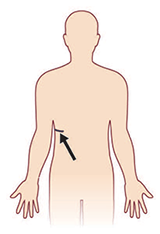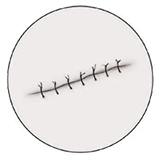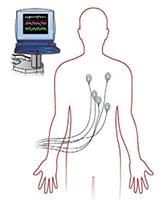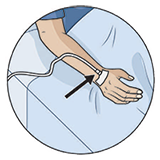A carotid endarterectomy is a type of surgery to treat a narrowing in your carotid artery. Your carotid artery is an artery in your neck that supplies blood to your brain. When there is a build-up of plaque (hardening of the artery), this narrows the artery and increases your risk of having a transient ischemic attack (TIA) or stroke. To decrease your risk of stroke, your surgeon makes an incision (cut) in your neck to remove the plaque and repair the artery.
Pre-Admission Visit
In the weeks before your operation, you will have a pre-admission appointment. This appointment could take 2 to 4 hours.
What should I bring to my pre-admission appointment?
- Your health card (OHIP card). If you do not have an OHIP card, please bring another form of government-issued photo ID, such as a driver's license or passport.
- Any other insurance cards. You will need the policy number of your extended health insurance, if you have any.
- Your spouse/partner, a trusted friend or family member (to offer you support and be a second set of ears).
- All the medications you take in their original containers. This includes prescription medications, over-the-counter medicines, vitamins, supplements and herbal or natural products.
- A copy of your power of attorney for personal care and/or advanced directives.
- A list of any questions that you may have about the operation and recovery.
- The name or phone number of your pharmacy, as well as any medical specialists that you have seen in the past 3 years.
- If you have had a cardiac stress test, echocardiogram and/or a pulmonary function test in the past 3 years, it would be helpful to bring a copy of the final report with you to this appointment.
What happens during my pre-admission visit?
- You will have blood tests and routine skin swabs. The swabs are taken from your nose and other areas of your body to check for germs that can cause infections.
- You may also need an
electrocardiogram (ECG) to check your heart and a chest
x-ray to check your lungs.
- You will meet many health care providers during your pre-admission visit. Please feel free to ask them any questions that you may have.
- A pre-admission nurse will review your health history and give you information to prepare you for your operation, including directions for cleaning your skin, eating before your operation, taking your medications and pain management.
- A pharmacist will review your medications.
Depending on your needs, you may also meet:
- An anesthetist who will review your health history, discuss your anesthetic plan and pain relief after your operation.
- A member of the medicine team, if you have other complex health problems.
The day before your surgery
- Do not eat or drink after midnight on the night before your operation.
- If you smoke, do not do so for 24 hours before your operation.
- Do not drink alcohol for 24 hours before your operation.
- Remove all nail polish and body piercings.
Stop smoking before your surgery: learn how smoking and tobacco can affect your recovery after surgery, and how
quitting can improve your health.
What Should I do the day of my surgery
Arrive 2 hours before your scheduled operation time.
Surgical Admission Unit (SAU) at
Toronto General Hospital
Peter Munk Building – 2nd Floor
All hospital entrances are open by 6:00 am. However, Elizabeth St. and University Ave. are easiest to access.
After your surgery, you will go to the Vascular Step-Down Unit, located in the CVICU (Cardiovascular Intensive Care Unit) for 1 night.
What can I expect to have on my body?
You will be attached to some or all of these machines and tubes:
| Incisions, tubes or drains | What to expect |
|---|

|
Incisions: Your surgery will be completed either by a thoracotomy or by video assisted surgery (VATS). With a thoracotomy, you will have an incision on your side: 8 to 25 centimetres (about 2½ to 10 inches) long. With VATS, you will have 3 to 5 small incisions on your side: each about 2 centimetres (about ¾ of an inch) long. You will also have 1 to 2 small incisions on your side for the chest tube(s): each will be about 2 centimetres (about ¾ of an inch) long. |

|
Stitches or staples: You will have an incision (cut) in your neck about 10 to 15 cm long. Dissolvable stitches that will disappear over time are used to close this incision. |

|
Heart monitor: You will be on a heart monitor while you are in the Step Down Unit. |

|
Intravenous (IV): You have an IV so we can give you fluids and medicines. It stays in until you are drinking well. |
Where and when
About 1 week after your discharge, you will follow-up with your family doctor.
About 4 to 6 weeks after your operation, you will follow-up with your surgeon's office.
